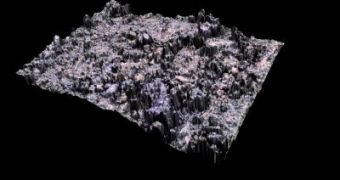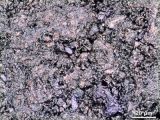It was first discovered in 1911 during experiments with mercury cooled at temperatures close to absolute zero and nearly a century later, superconductivity still manages to baffle the minds of researchers. Scientists from the National High Magnetic Field Laboratory at Florida State University recently discovered a new superconducting material with properties that make it ideal for applications in the field of MRI machines, superconducting electric motors and power transmission lines.
The new material is a 'doped rare earth iron oxyarsenide' that expresses superconductivity in a unique way. "What one would like is a greater selection of superconductors, operating at higher temperatures, being cheaper, possibly being more capable of being made into round wires. Iron and arsenic, both inherently cheap materials, are key constituents of this totally new class of superconductors. We're just fascinated. It's superconductivity in places you never thought of", said David Larbalestier, director at the Applied Superconductivity Center.
Superconductivity is a property of the material that allows it to conduct electricity with minimal power loss. Practically, the electrons of the material flow without friction, reducing the electrical resistance to nearly zero. However there's a catch. Most of the materials available today experience superconductivity at nearly absolute zero temperatures, making the use of superconductivity in daily applications highly impractical.
New high temperature superconductors today conduct at about 138 Kelvin, a temperature much closer to normal, but still a far cry from room temperature.
In the last year or so, a new iron-based superconducting material containing slight amounts of arsenic has been developed by Japanese researchers who thus created a material that becomes superconductor at 26 Kelvin. Iron is not generally used as superconducting material, mostly because it has exceptional magnetic properties and remains magnetized for long periods of time. When current flows through a conductor, it also generates a magnetic field. Since superconductors have zero electrical resistance, this magnetic field is greatly amplified by magnetizing iron, turning off the superconductivity of the material.
Apparently, this didn't discourage Larbalestier and his colleagues, who created a similar iron oxyarsenide material and decided to test it in a magnet laboratory, capable of producing a magnetic field with a strength of 45 Tesla; for comparison, Earth's magnetic field is some 900,000 times weaker. The team wanted to see the field tolerance limit for the new material and found that it stops superconducting at 45 Tesla, a field intensity much higher than that experienced with other known superconductors.
Such a high tolerance practically means that these superconductors are ideal for creating powerful superconducting magnets. The most powerful superconducting magnet currently available is able to generate a mere 26 Tesla, nearly two times less than the tolerance of the new material.
Normal superconductors have been proven to conduct when their electrons enter in a state known as 'Cooper pairs', as electrons with opposite spin and momentum pair up and travel frictionlessly through atoms. The new finding seems to add yet another puzzle to the shroud covering the superconductivity mechanism in high temperature superconductors.
"So far, based on both theoretical calculations and what we're seeing from the experiments, it seems likely that this is a completely different mechanism for superconductivity. The field is completely open. No one knows where this is going to go. If it's found that these materials can support high current densities, then they could be tremendously useful.", said Frank Hunte, post doctoral associate from the Applied Superconductivity Center.

 14 DAY TRIAL //
14 DAY TRIAL // 
